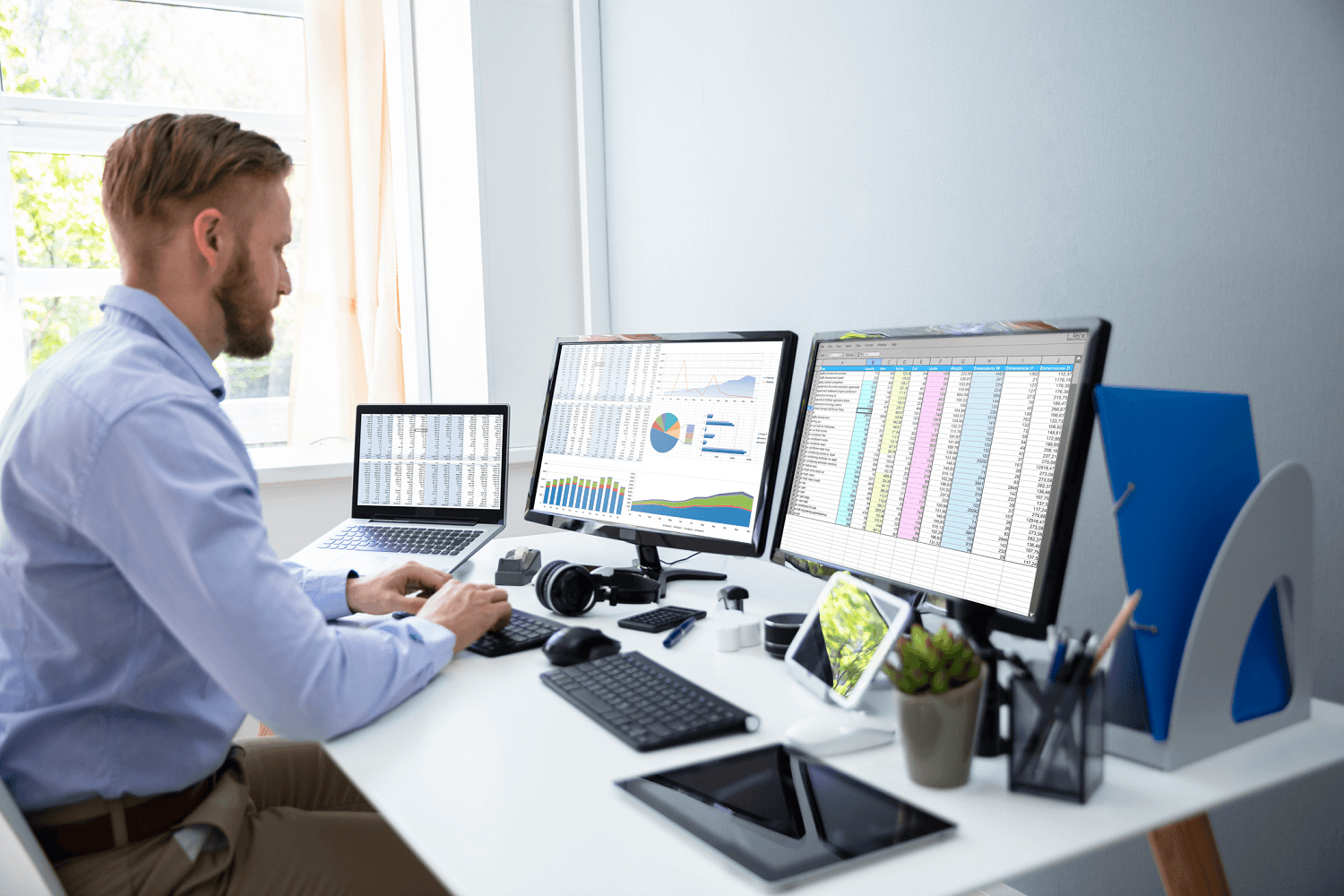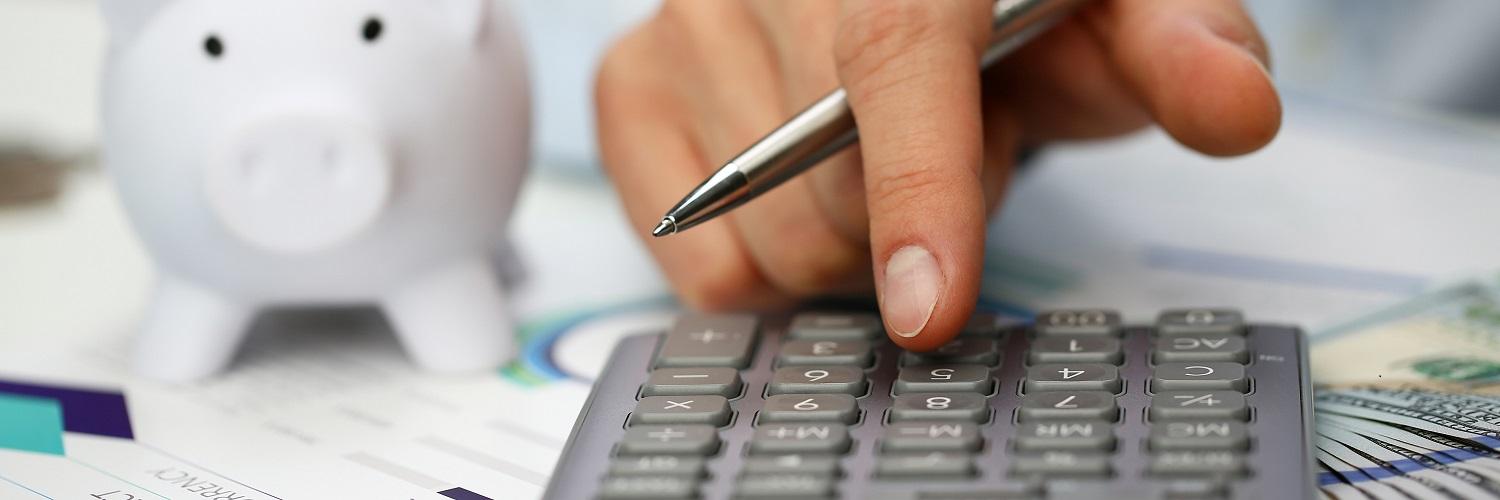MENU
Starting a Business
- Best Small Business Loans
- Best Business Internet Service
- Best Online Payroll Service
- Best Business Phone Systems
Our Top Picks
- OnPay Payroll Review
- ADP Payroll Review
- Ooma Office Review
- RingCentral Review
Our In-Depth Reviews
Finance
- Best Accounting Software
- Best Merchant Services Providers
- Best Credit Card Processors
- Best Mobile Credit Card Processors
Our Top Picks
- Clover Review
- Merchant One Review
- QuickBooks Online Review
- Xero Accounting Review
Our In-Depth Reviews
- Accounting
- Finances
- Financial Solutions
- Funding
Explore More
Human Resources
- Best Human Resources Outsourcing Services
- Best Time and Attendance Software
- Best PEO Services
- Best Business Employee Retirement Plans
Our Top Picks
- Bambee Review
- Rippling HR Software Review
- TriNet Review
- Gusto Payroll Review
Our In-Depth Reviews
- Employees
- HR Solutions
- Hiring
- Managing
Explore More
Marketing and Sales
- Best Text Message Marketing Services
- Best CRM Software
- Best Email Marketing Services
- Best Website Builders
Our Top Picks
- Textedly Review
- Salesforce Review
- EZ Texting Review
- Textline Review
Our In-Depth Reviews
Technology
- Best GPS Fleet Management Software
- Best POS Systems
- Best Employee Monitoring Software
- Best Document Management Software
Our Top Picks
- Verizon Connect Fleet GPS Review
- Zoom Review
- Samsara Review
- Zoho CRM Review
Our In-Depth Reviews
Business Basics
- 4 Simple Steps to Valuing Your Small Business
- How to Write a Business Growth Plan
- 12 Business Skills You Need to Master
- How to Start a One-Person Business
Our Top Picks
What Are Assets in Accounting and Business?

Table of Contents
The term “asset” is often heard when a business’s financial value is assessed. An asset can be any resource an individual or a corporation controls that generates a positive economic benefit for its owner.
Personal assets contribute to someone’s wealth. In contrast, a corporation’s business assets are listed on balance sheets and measured against liabilities and equity. Here’s a primer on assets, including how they work and how to determine their value.
What are assets in a business?
Assets are resources owned by an individual or a corporation that can be converted into cash or could generate cash flow in the future. Examples of personal assets include homes, cars, art, property and investments like bonds, pensions and retirement plans. A person’s net worth is calculated by subtracting their liabilities (everything they owe) from their assets (everything they own).
Business assets include anything the business owns that has positive economic value and could sustain production and growth. A company lists its assets on a balance sheet, which details the business’s worth, how it is financed and how well it manages its resources.
Examples of assets
The most common assets companies list on their balance sheets include the following:
- Cash
- Investments
- Accounts receivable
- Inventory
- Prepaid expenses
- Property
- Buildings
- Equipment
- Furniture
- Vehicles
- Company devices
Calculating total asset value can help determine a company’s net worth. Businesses must classify assets to determine the business’s value and financial health.
“Having this type of real-time information at their disposal – cash, inventory, etc. – is incredibly beneficial to business owners,” noted Alberto Ortiz, president of ATAX Franchise. “Classifying short-term assets such as cash, accounts receivable and inventory provides a snapshot of where a business owner’s resources are invested for operations.”
Ideally, a company’s assets should be balanced to accommodate short-term and long-term business needs. “Think of it as a tripod: Too much allocation in one area can unbalance a business’s financial position,” Ortiz explained. “For example, having a high accounts receivable outstanding balance could indicate a business has less cash available to fund upcoming inventory, reducing sales or forcing a business owner to borrow for upcoming purchases inadequately. The same problem can occur in reverse when having more inventory than necessary to keep up with demand can deplete cash balances.”
Some assets are treated as expenses, while others are depreciated, depending on their useful life. Even some intangible assets, like patents and copyrights, can be depreciated under certain conditions.
How do assets work?
Your financial tracking process must include tracking business assets. Understanding your assets is crucial for many financial matters. For example, when owners seek business insurance, they must identify their assets and their worth to get proper coverage.
Assets also play a role when you’re applying for a business loan; lenders consider the value of your assets when determining loan approvals and amounts. They may also use certain assets as collateral, depending on the loan’s amount.
Every asset has three key properties that help determine its value:
- Ownership: Assets that represent ownership can be converted into cash and cash equivalents.
- Economic value: Assets with economic value can be sold or exchanged.
- Resource: These assets can be used to create future financial benefits.
What are the different types of business assets?
When a finance team determines an asset’s value, they can classify it in three ways:
- Convertibility
- Physical existence
- Usage
Convertibility: Current and fixed assets
Current and fixed assets can easily be converted into cash or cash equivalents.
“Healthy cash flow is critical for any business, and all owners must keep an eye on cash,” advised Stacy Burrell, vice president of finance at Consero Global. “Because assets are the business, cash obviously sits on top of the list of all assets, which are ordered by how easily they can be converted to cash.”
A current asset can be converted into cash within one financial year or operating cycle. These assets are used to facilitate day-to-day operational expenses and investments. They include (but are not limited to):
- Cash
- Market securities
- Accounts receivable
- Inventory
“Accounts receivable and inventory are current assets, as they can easily be converted to cash,” Burrell explained. “Inventory refers to assets that are ready to be sold or converted into a finished product to be sold.”
Current assets are typically expected to be liquidated within one year or operating cycle or converted into fixed assets. Fixed assets have a life of more than one year. They typically include property, equipment, vehicles, and furniture. Fixed assets cannot be easily converted to cash or meet short-term operational demands or expenses.
The operating cycle refers to the continuous process of buying and selling inventory and collecting cash from those transactions. In contrast, the accounting cycle tracks transactions from purchase until they’re recorded on a financial statement.
Physical existence: Tangible and intangible assets
When assets are categorized by their physical existence, they are considered either tangible or intangible.
- Tangible assets: Tangible assets exist in a physical form; they can include cash, investments, land, buildings, property, inventory, vehicles, and many other valuables. Many current and fixed assets fall into this category.
- Intangible assets: Intangible assets do not exist in any physical form; their value is not easily determined. They can include a brand name, a dictation network, patents, processes, corporate methodology, and business copyrights.
Usage: Operating and nonoperating
Assets that are categorized by their usage can be considered operating or nonoperating.
- Operating assets: An organization uses operating assets in its day-to-day operations. They include cash, stock, buildings, inventory, equipment, machines, copyrights and patents.
- Nonoperating assets: Nonoperating assets generate revenue but are not required for business operations. Nonoperating assets include short-term investments, vacant property and interest income.
How do you determine the value of your assets?
Asset valuation is incredibly important for a corporation’s financial success, especially in the event of a company merger, loan application, audit or asset sale.
Businesses should start by listing their assets on a balance sheet. From there, they can add up their assets and use the basic accounting formula to determine their net worth. A professional appraiser must determine larger businesses’ assets.
There are four methods of determining an asset’s value:
- Cost method: The cost method appraises an asset based on its original price. However, because of market and depreciation changes, businesses don’t always get the most accurate results.
- Market value method: The market value method determines an asset’s value based on the price it would sell for on the open market.
- Base stock method: The base stock method has the company keep a certain stock level; the value is assessed based on the base stock. Not every type of asset can be determined through this method.
- Standard cost method: The standard cost method uses expected costs, not actual costs, to appraise an asset. The company bases the expected cost on its experience with the asset and estimates what it will be worth in the future. To determine these costs, a business records the differences between expected and actual costs. Because actual costs often differ from expected costs, these differences are known as variances. Favorable variances are when actual costs are less than expected costs; unfavorable or negative variances occur when actual costs exceed expected costs. Variances can affect the company’s valuation, and large, recurring variances should be investigated.
Understanding how to properly value your business’s assets is critical to understanding its overall financial health. Using the methods above will help you ensure a more accurate asset valuation.
An accurate business valuation is critical when presenting to investors and potential buyers. You must be able to demonstrate your business’s worth to gain their interest and attention.
The best accounting software for tracking assets
Accounting software helps you accurately track assets from acquisition through depreciation and retirement so you always have an up-to-date valuation. Here are some of the best accounting software packages for tracking assets.
FreshBooks
FreshBooks is an easy-to-use accounting package suitable for business owners new to accounting. FreshBooks makes creating, sending and tracking invoices easy. A robust invoicing process is critical for managing cash and accounts receivable – two of your most current assets. The software helps you make a summary report of your assets and finances and share it with your bookkeeper or accountant. Read our complete FreshBooks review for more detailed information.
Xero
Xero presents accounting information intuitively, avoiding industry jargon. In addition to invoicing, Xero’s inventory-tracking and purchasing features help businesses that sell physical products track these assets. Xero’s fixed assets module allows you to enter new assets, set the depreciation method and record asset disposal. Check out our Xero review to learn about additional features and pricing.
Sage Business Cloud Accounting
Sage Business Cloud Accounting has an open API, making it highly customizable. You can use it to create professional-looking custom invoices with your logo and colors, which can help improve your cash flow. You can also connect your business checking account, credit card accounts and savings account to record and reconcile transactions automatically. If you have many complex assets to manage, Sage offers a stand-alone, fixed asset management solution. Our in-depth Sage Business Cloud Accounting review explains more about this comprehensive package.
Oracle NetSuite
Oracle NetSuite is a robust accounting solution for established and complex businesses, even those doing business internationally. Its fixed asset management module allows you to import new or midlife assets, track their depreciation, and view each asset’s depreciation history. When you post an originating document tied to an asset, the software will automatically propose the asset’s creation in the system. You can also manage non-depreciating assets by tracking insurance, employee ownership and maintenance. Visit our Oracle NetSuite review for a more detailed feature overview.
Jennifer Dublino contributed to this article. Source interviews were conducted for a previous version of this article.




